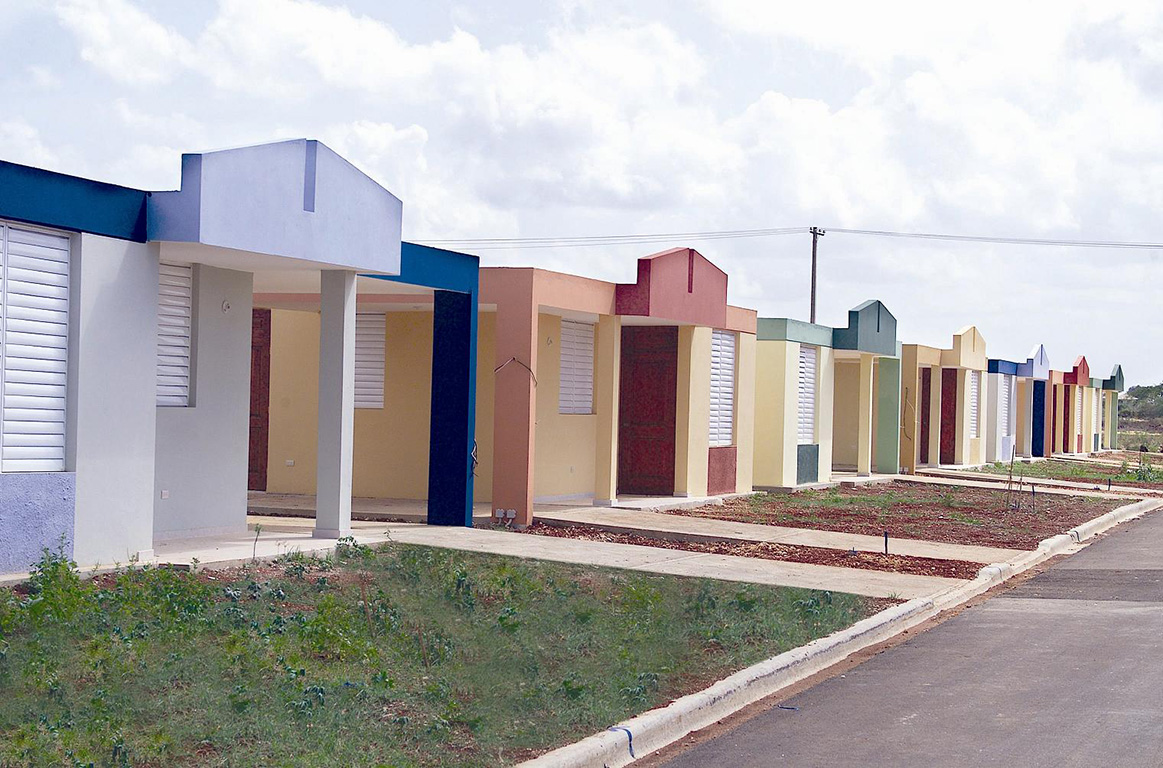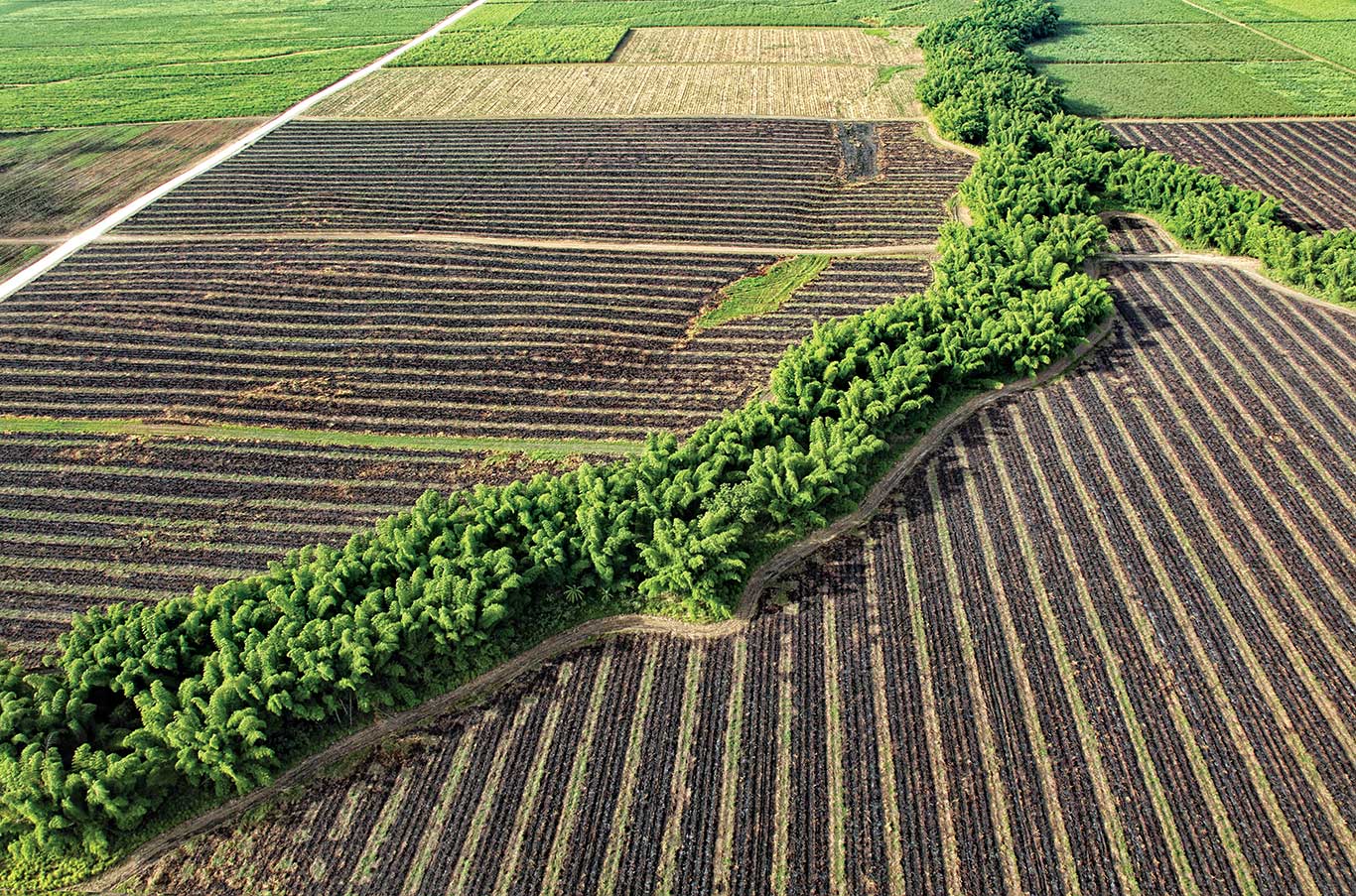HOUSING & ENVIRONMENT
The housing program at Central Romana has successfully led to the construction of thousands of houses in both the urban and agricultural areas of the region, benefiting employees and their families.
Regarding environmental matters, the company remains steadfast in its commitment to continue implementing sustainable practices, aiming to reduce its impact on the environment.

The company has provided housing facilities to more than 5,000 employees and workers through a modern program in which the beneficiary receives the basic housing at no cost. Additionally, they are given facilities to finance, interest-free, the construction of floors, doors, and windows.
The company owns 369 multiple residences for singles and 5,372 homes in its “bateyes” (worker communities), all provided at no cost to its workers and their families. These residences have access to potable water and electricity supplied by the company for communities closest to the city of La Romana. Others receive the service from the state electricity corporation.
Furthermore, approximately 400 employees and workers live in houses and apartments owned by Central Romana, without any rental costs.

Central Romana and its subsidiary companies are committed to environmental sustainability practices throughout the agricultural process, achieving a reduction in their impact by recycling organic waste and optimizing resources.
In their mission to preserve the environment, the company maintains close ties and collaborates with various environmental conservation institutions in the East region, including the Ministry of Environment of the Dominican Republic and its Regional Directorate.
The company conducts tree planting events in specific areas, such as the mining area of El Peñón and river basins, with the supervision of Forest Inspectors. These events involve the participation of students and company employees.
Over 3,000 plants of species such as Nin, Corazón de Paloma, Flamboyán Morado, Almendra, Ceiba, Flor de Sol, and Acacias have been planted. These actions aim to improve water supply in rivers and dams in the area, as well as enhance the well-being of plants and animals in the environment.
The tree planting program is designed for the months of February, March, April, May, and June each year, commemorating globally recognized dates such as Earth Day, Environmental Day, Tree Day, among others.
As a way to contribute to forest preservation and prevent deforestation, the company has made a significant investment in manufacturing sleepers (cross ties) based on prefabricated concrete, thereby avoiding the use of imported or domestic wood for the country’s sugar industry railroads.
Various recommendations for water conservation are imparted to the company’s workforce through an education and water-saving plan. This includes educational materials that provide guidelines for the rational use of water, both in work areas and on a personal level at home.
The company has initiated efforts to reduce water usage in the industrial area by utilizing evaporated water from sugarcane juice to generate steam in the sugar mill during the sugar cane harvest.
In the case of Costasur Dominicana, the corporate division operating in the real estate tourism sector, there has been a 50% reduction in water consumption on golf courses and green areas through the automation of the irrigation system for these purposes.
The company also repurposes other waste, such as cachaza, a byproduct of the sugar manufacturing process, as organic fertilizer for sugarcane cultivation and golf courses, maintaining a sustainable biological cycle.
Regarding other environmental initiatives, Central Romana will reduce fossil fuel consumption by approximately 7 million gallons per year with the installation of a new biomass boiler for energy generation.
In addition to this, the company is implementing the electrostatic precipitators plan for its boilers, which will reduce emitted particles by more than 95%.
In the fields, Central Romana does not burn sugarcane during the harvesting process, a practice employed by many other mills worldwide. By adopting the green harvesting approach, the more than 150,000 acres of planted sugarcane result in a reduction of over 42,000 tons per year of CO2eq gases emitted into the atmosphere. This significantly contributes to the reduction of greenhouse gases.
With these current measures and future projections, the company remains steadfast in its commitment to the environment in accordance with the laws of our country.
The United Nations Global Compact (UNGC) is a global initiative that encourages businesses to align their operations and strategies with universal principles on human rights, labor, environment, and anti-corruption. It’s a voluntary framework, but companies participating in the UNGC commit to taking action in these areas and reporting on their progress.
Central Romana is a participating member of the UNGC and have pledged to uphold the UNGC principles and contribute to achieving the UN Sustainable Development Goals (SDGs).
To learn more about Central Romana’s specific commitments and progress within the UNGC framework, visit CRC’s Communication on Progress (CoP) report on the UNGC website. This report details Central Romana’s activities and achievements related to human rights, labor standards, environmental responsibility, and anti-corruption efforts.




